How To Prevent Hair Tangling: 10 Tips For Tangle-Free Locks
Avoid getting your tresses in a twist with the help of these easy and effective hacks.
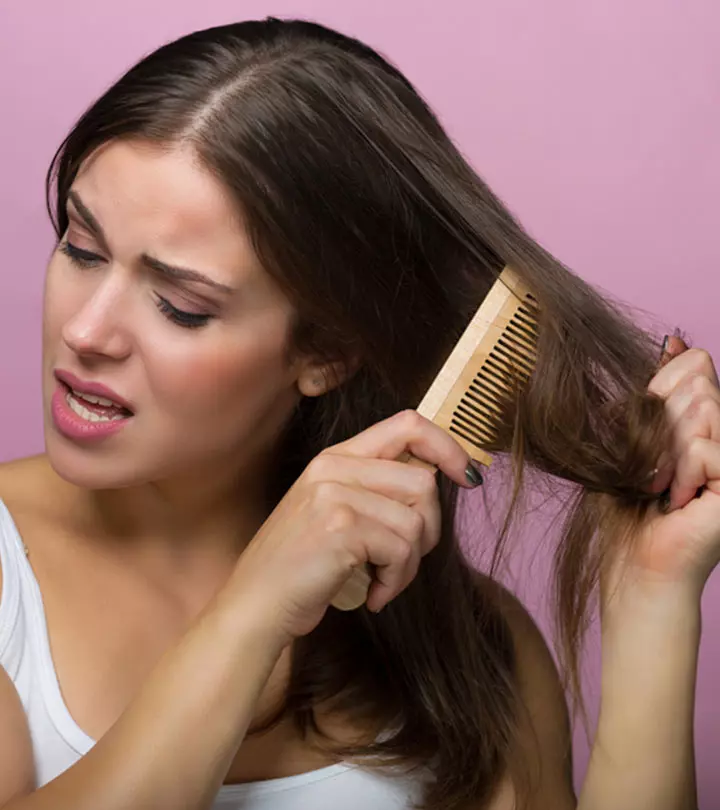
Image: Shutterstock
Being entwined may sound romantic unless it is your hair! Knotted locks can be a mess to handle, but there are ways you can prevent your hair from tangling. Using flat irons, curlers, blow dryers, and heat styling tools, incorrect hair washing techniques, and even some hairstyles can make your hair a tangled, knot-ridden jungle. Not combing or washing your tresses regularly is another reason why your hair seems unmanageable. However, simple practices like using the right conditioning products and brushes can keep your hair strands hydrated, smooth, and detangled. Keep reading to know more ways you can keep your locks tangle-free.
In This Article
What Causes Hair Tangling?

There could be a few reasons why your hair is constantly tangling. Hair texture, frequency of brushing, exposure to wind, as well as the health of your hair can all contribute to matting. Your hair is more likely to tangle due to:
1. Lack Of Moisture
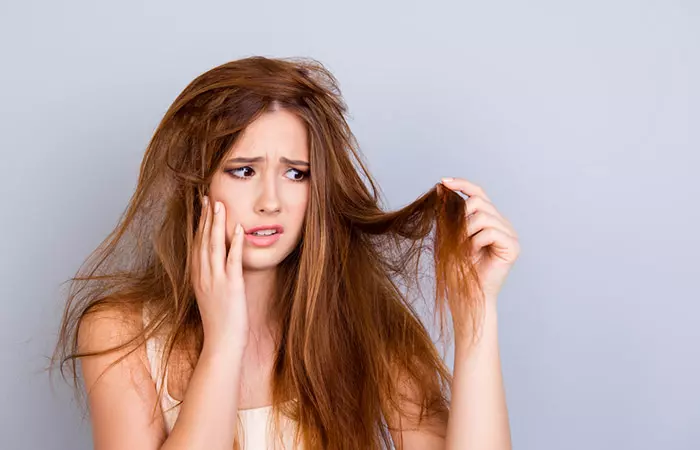
When your hair lacks moisture, it leads to friction and tension, which then causes tangles. The outer layers of your hair shaft break, which results in a rough and damaged look. Lack of hydration can also deteriorate the condition of your hair.
2. Not Combing Your Hair

Not brushing daily is a major threat to your hair. It can even cause hair breakage at the crown. Eventually, it will create kinks in your hair. With no combing, the oil or residue that is built up over time can disrupt the health of your hair. Some people only detangle the ends of their hair and fail to detangle the knots at the roots. Improper detangling of hair can further cause more tangles and knots.
3. Untrimmed Dry Ends
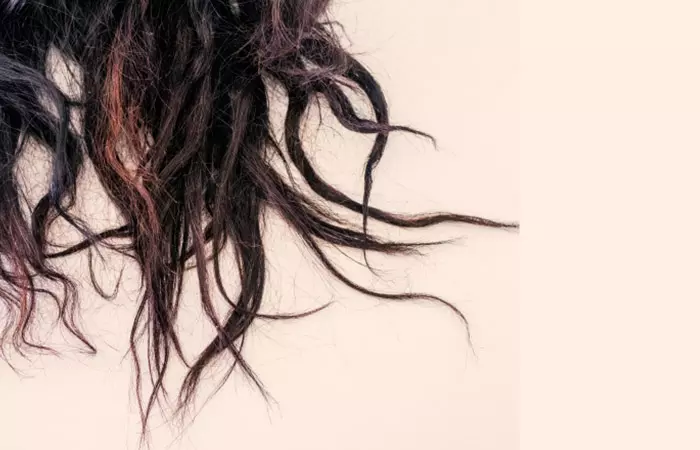
Going long periods without trimming your hair results in split ends and frizzy hair. Dry ends also tend to break easily. And once your hair splits, it cannot be repaired. It remains dry and causes tons of frizz in your hair. Dry, frizzy strands and split ends can tangle your hair easily.
4. Sleeping With Your Hair Down
Sleeping without braiding or tying your hair up can lead to some serious tangles. Hair tangling can be caused by the friction between hair strands. If you leave your hair down, the hair cuticles rub against each other while you sleep. Another major no-no is going to bed with wet hair. Hair is most fragile when it is wet. It can get frizzy quickly and break easily. The tangles caused by lying down with damp hair are a nightmare as they are rigid and tough to remove.
5. Damaged Cuticles
Constantly heat styling or blow-drying can make your hair shafts break and cause friction, resulting in knots. When your hair is damaged, its external layers get scraped off, leaving the inner layer (the cortex) exposed and unprotected. This accelerates the damage to your cuticles.
6. Washing Hair With Hard Water
Hard water, characterized by its high mineral content, can leave behind a residue in hair. This residue has a tendency to make your hair shaft rough and coarse and can cause increased friction and tangling. The minerals, such as calcium and magnesium, can bind to the hair strands and make them more brittle and prone to tangling. This, over time, can lead to a buildup of tangled hair and make managing or styling hair a challenge.
7. Tight Hairstyles
Tight hairstyles, such as braids, ponytails, or buns, can exacerbate hair tangling, especially when the hair is tightly pulled or secured with elastics, clips, or pins. The constant pulling of the hair shafts can also entangle the neighboring hair strands. Detangling these strands can be a challenge and may often cause unnecessary hair breakage and damage.
Furthermore, wearing high collared tops or cotton scarfs may absorb all the moisture from your hair and cause friction, which then causes hair tangling. Product build-up, using the wrong deep conditioner that is not suitable for your hair porosity, and postponing your hair wash days can all lead to tangles. But you can stop your hair from tangling by following these tips.
Key Takeaways
- Your hair may get tangled frequently if you use heat styling tools, clean your hair incorrectly, brush it too often, expose it to wind, or neglect its health.
- A wide-toothed comb and the right hair conditioner can keep your hair from getting tangled.
- You can prevent tangles by wearing your hair in a braid or ponytail, trimming your hair, and using hair styling tools carefully.
How To Stop Your Hair From Tangling
If you want to know how to detangle your hair or prevent tangling, here is what you need. A proper hair maintenance routine, which includes regular hair grooming and using the right hair products can help prevent hair knots. This makes it easier to style your hair without causing any damage. Here are some hair tips to prevent frequent tangling:
1. Condition Your Hair
Merely shampooing your hair is not good enough. Always finish with a moisture-locking conditioner. This helps your brush slip through your hair without any obstacles. Conditioner smoothens your hair and softens the dry strands effectively. It is best to let the product sit in your tresses for a couple of minutes before washing it off. Applying conditioner to your hair will seal in the moisture and make your hair less tangled. While applying conditioner, always pay more attention to the ends of the hair.
Use your fingers to remove all the knots carefully. This will help in detangling your hair without any breakage. Then, gently comb through your tresses with a wide-toothed comb.
2. Use A Wide-Toothed Comb
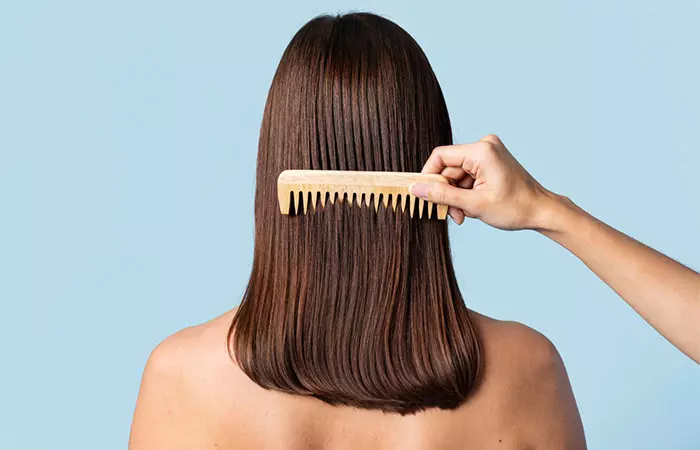
This is one of the best hair tricks in town. It is best not to use a rat-tailed comb or a brush on tangled hair, even though using a hairbrush can be tempting because it’s easy to use. But, brushes can tear open the shafts and cause further hair damage. Instead, use a wide-toothed comb as it removes knots more efficiently without pulling your hair too much. Start combing your hair from the ends and gradually work your way up to the roots to prevent breakage. Always comb your hair when it’s dry (only for straight and wavy hair types), as wet hair is more prone to damage. If you have curly hair, it is best to gently comb wet locks. For better results, try applying a leave-in conditioner beforehand to make the process smoother and easier. Remember, you need to brush your hair the right way.
Always brush your hair before taking a shower. This will prevent your hair from getting tangled when you wash it. Furthermore, do not brush your hair when it is wet as it is more prone to breakage.
 Quick Tip
Quick Tip3. Rinse With Cold Water
This is a simple yet effective step. A hot water shower opens up the hair cuticles, which leads to tangling and frizz. Rinsing your locks with cold water at the end of your shower closes your cuticles and prevents any breakage and tangling. Doing so also keeps rough and dry strands at bay.
4. Go Easy With The Towel
Twisting and rubbing your hair with a terry cloth towel vigorously immediately after a shower can cause a great deal of hair fall and breakage. It also disturbs the structure of the cuticles, resulting in split ends and frizzy hair. Instead, gently squeeze your hair with a towel and let it air-dry. Microfiber towels are the best option to get great results. If you want to blow-dry your hair, let it air-dry about 80% of the way before blow-drying it.
5. Protect Your Hair While Sleeping
Did you know that your hair can get tangled while you sleep? Yes, the friction caused by the hair strands can cause knots and tangles. You need to protect your hair while sleeping. To combat this, invest in a silk pillowcase as it does not cause friction and prevents your hair from getting tangled. Avoid cotton pillowcases as they are rough in texture and tend to dry out and break your hair.
Furthermore, loosely braid your hair or tie your hair up in a loose bun before going to sleep to avoid hair tangles.
A blogger shared her efficient night-time hair care routine in a post. The routine involves spritzing the hair with a mixture of rose water and peppermint oil, followed by sectioning and applying leave-in conditioners and oils and tying the hair in Bantu knots. She writes, “I perform this ritual to keep my hair moisturised and tangle free constantly. After my recent experience with detangling I have learnt that prevention is better than cure!! Every natural both new and seasoned must keep their hair in a manner that prevents it from tangling on itself while you are asleep. It’s necessary to prevent future breakage and hassle (i).”
 Quick Tip
Quick Tip6. Oil Your Hair Regularly
To give your hair a healthy dose of moisture, you need to oil it on a regular basis. Organic coconut oil is an excellent way to show some love to your locks. Massage some warm coconut oil into your parched tresses to moisturize them. This trick works great on all hair types. To get long-lasting results, you can mix coconut oil with jojoba and olive oils. This mixture can get rid of tangles effectively.
7. Apply Hair Masks
Applying a hair mask once a week can improve your hair texture drastically and restore its moisture. It hydrates and soothes your dry cuticles, leaving your locks silky and soft. Some of the most effective ingredients that can transform your hair are yogurt, honey, and almond oil. Mix these ingredients, apply the paste to dry hair, and leave it on for 20 minutes before washing it off.
You will see a lot of difference in your hair texture within a few weeks. If masks are too time-consuming for you, you can add lemon juice to two cups of water and massage the solution onto your scalp. This will transform your hair within days. These are highly potent hair treatments that can leave your hair healthy, silky, and less prone to tangles.
8. Avoid Using Heat Styling Tools
Heat styling tools like blowdryers, straighteners, and curling irons can take a toll on your delicate locks. It may seem too difficult to avoid hairstyling tools. But, if you are using them constantly without using any heat -protectants, they can dry out your hair. This condition further leads to the tangling of the hair. To avoid this, use the tools on low to medium heat settings. You can further avoid damage by applying a heat protectant before heat styling your hair.
9. Use Detangling Products
Products like detangling sprays, serums, and conditioners can undo knots effectively. They soften the dry strands and eliminate interweaves. If a gigantic knot is troubling you, apply some detangling product to it and the area surrounding it. Massage your tresses and gently brush downwards through the knot. You may also use your fingers to separate the tangles.
10. Avoid Products Containing Alcohol
Although there is a wide range of products that claim to be natural, it is vital to look for the ones that are true to their claim, especially in terms of the presence of alcohol. Alcohol dries out your hair and ruins its texture, leading to tangling and breakage. Therefore, choose products that are free of sulfates and alcohol.
Now, let’s check out some simple tips that you can follow to reduce knots and tangles in your hair.
Tips To Reduce Knots And Tangles
- If you want to prevent your hair from knotting while swimming, exercising, or playing sports, then wearing it in a braid or ponytail is the best idea. Your hair gets matted with sweat and dirt when it is down.
- Always use your fingers to loosen the knots before using a comb. This can reduce the size of the knots substantially and make detangling less painful. Also, section your hair before detangling it. This can make your work way more manageable.
- Trim your hair every three months to get rid of split ends. Also, if you are not able to remove any knot, trim it as a last resort.
- Brushing hair when it’s wet can result in hair fall and breakage. Instead, use your fingers to remove any knots and tangles right after you step out of the shower.
- Avoid using hairstyling products that leave a residue, as they will contribute to the knotting of your hair.
- Apply a leave-in conditioner right after you wash your hair. Not only will this make your hair more manageable, but it will also reduce frizz and flyaways.
- Use natural homemade hair masks with ingredients like yogurt and honey to deep condition your hair every couple of weeks.
- Wear a scarf or a hat when stepping out to protect your hair from the sun, wind, dust, and pollutants.
- Oil your hair with a natural oil an hour before shampooing it.
Listed below are a few simple tips to reduce different types of tangles.
Fixing Dry Tangles
Dry tangles are especially painful to get rid of. Apply a mousse or a serum to smoothen the dry cuticles before you start detangling them with a comb.
Fixing Tangles Caused By Styling Products
Using too much hairspray or hair gel can make your hair stiff and cause stubborn knots. To get rid of the stiffness and knots, use an oil to moisturize your tresses first. This also helps in softening the dry ends. Gently massage the oil onto the troubled area and brush through your locks.
Fixing Wet Tangles
When your hair is wet, apply a serum before detangling it with your fingers. This helps in keeping your locks soft and smooth.
Infographic: Easy Tips To Avoid Tangled Hair
Tangled hair can be super tricky and painful to deal with. Factors like lack of moisture and irregularly combing your hair can cause further hair damage. To help you out, we have rounded up five easy tips to avoid tangled hair in the infographic below. Check it out!
Some thing wrong with infographic shortcode. please verify shortcode syntax
Tangled hair is difficult to handle and can break the strands. Several reasons contribute to knotted hair, including not using the right products, incorrect washing methods, heat styling tools, and not combing or washing your hair regularly. The tips mentioned in the article will help detangle and prevent your hair from tangling. Following these and maintaining a proper hair care routine will easily help you manage your hair. Also, using too much of certain products will damage your hair. Therefore, always follow the product instructions before using.
Frequently Asked Questions
What are fairy knots?
Fairy knots, technically known as trichonodosis, occur commonly in curly hair types when the end of the hair strand gets tangled up in itself. These knots are tiny and are common in hair with split ends.
How can different hair types affect tangling?
Different hair types like curly, straight, or coily can impact how easily hair tangles. Curly hair tends to tangle more because of its natural twists, while straight hair can get tangled due to product buildup. Knowing your hair type helps you pick the right products and methods to prevent tangling.
Is it best to detangle hair wet or dry?
Wet hair has weakened bonds. Unless you are using a good conditioner or a detangling product, it is recommended to detangle your hair when dry as the hair bonds are stronger then.
Should I detangle my hair every day?
You should detangle your straight hair every day. However, limit the detangling to wash days if your hair is curly.
Is coconut oil good for detangling hair?
Yes. Coconut oil has many nourishing benefits for hair. It also works well as a gentle detangling agent.
Should I wash my hair before detangling it?
It is recommended to detangle your hair twice on wash days – before shampooing and after applying a conditioner.
Illustration: Tips To Prevent Your Hair From Tangling
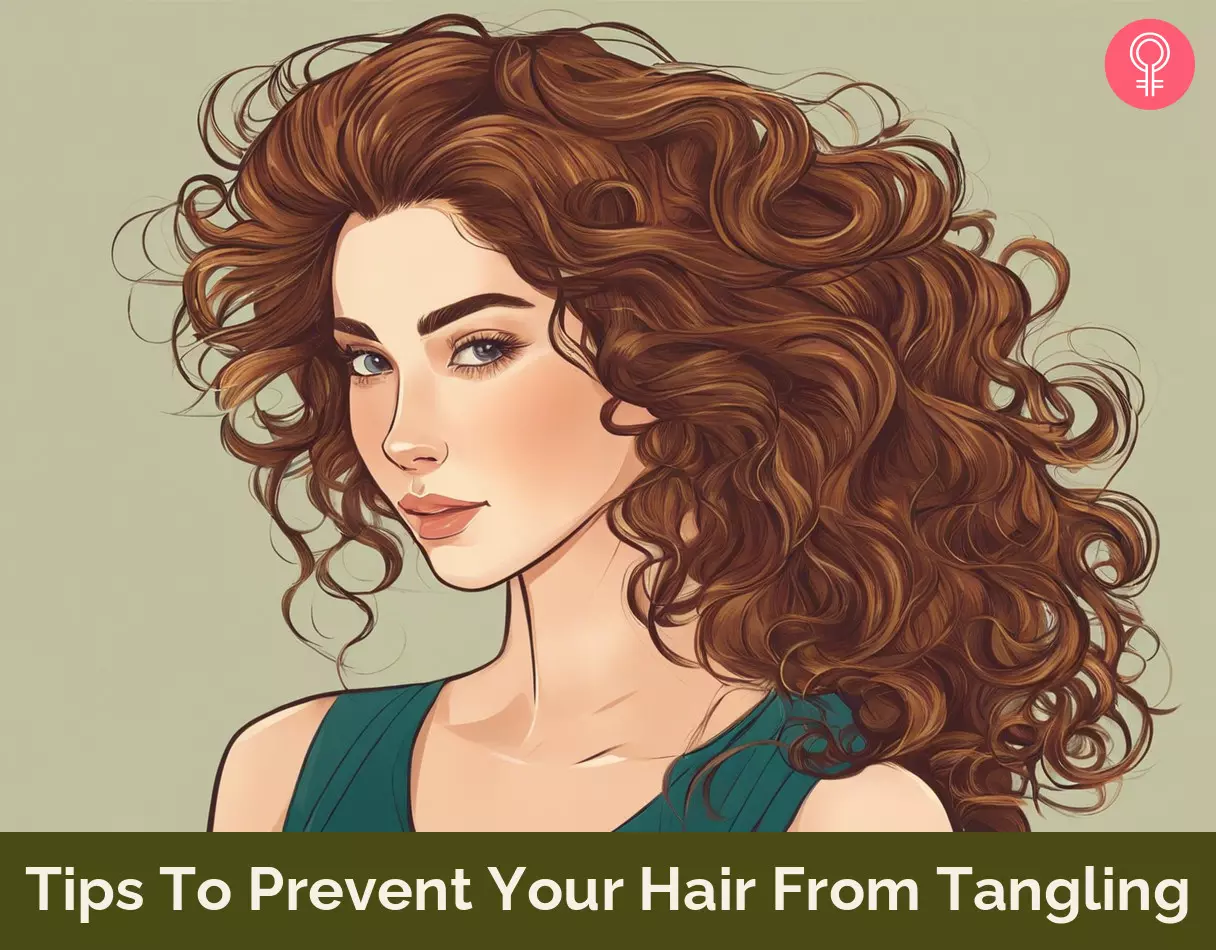
Image: Stable Diffusion/StyleCraze Design Team
Tired of dealing with tangled hair? Get expert tips on preventing those frustrating knots in this informative video. Click now to watch and embrace beautiful, hassle-free hair!
Personal Experience: Source
StyleCraze's articles are interwoven with authentic personal narratives that provide depth and resonance to our content. Below are the sources of the personal accounts referenced in this article.
i. My night time routine!https://beautifullynappy.wordpress.com/2016/03/30/my-night-time-routine/
Read full bio of Dr. Meena Konada
Read full bio of Arshiya Syeda
Read full bio of Ramona Sinha
Read full bio of Swathi E






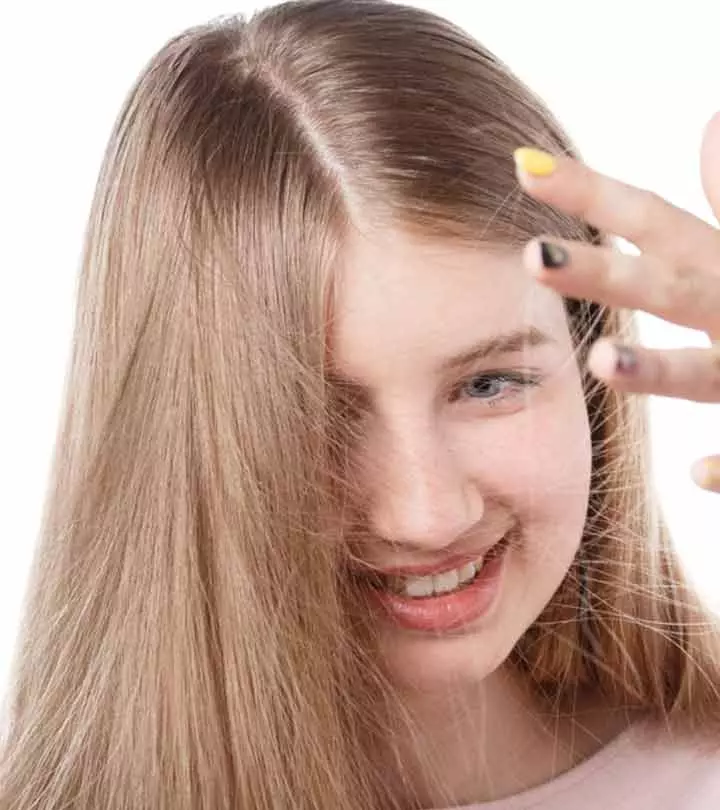


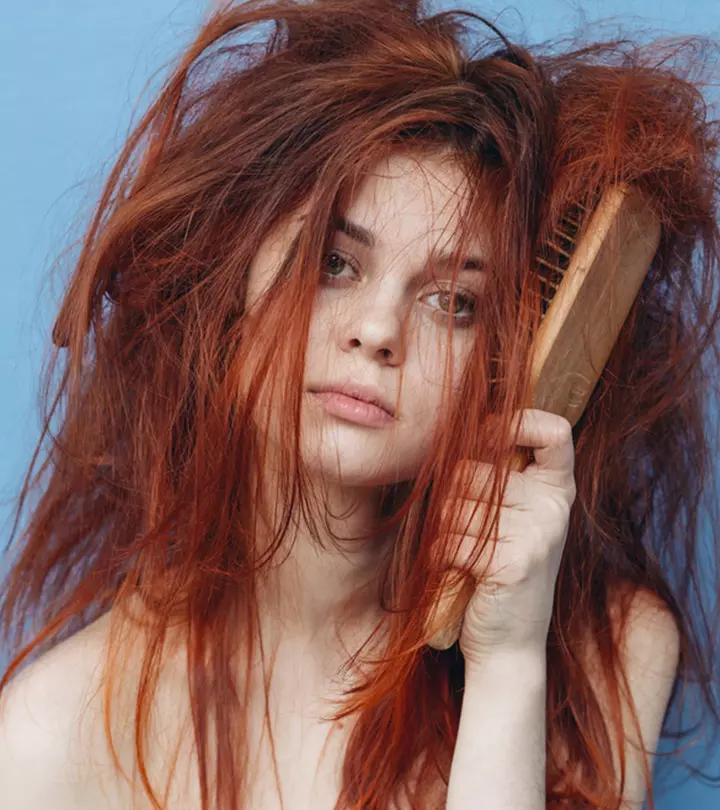
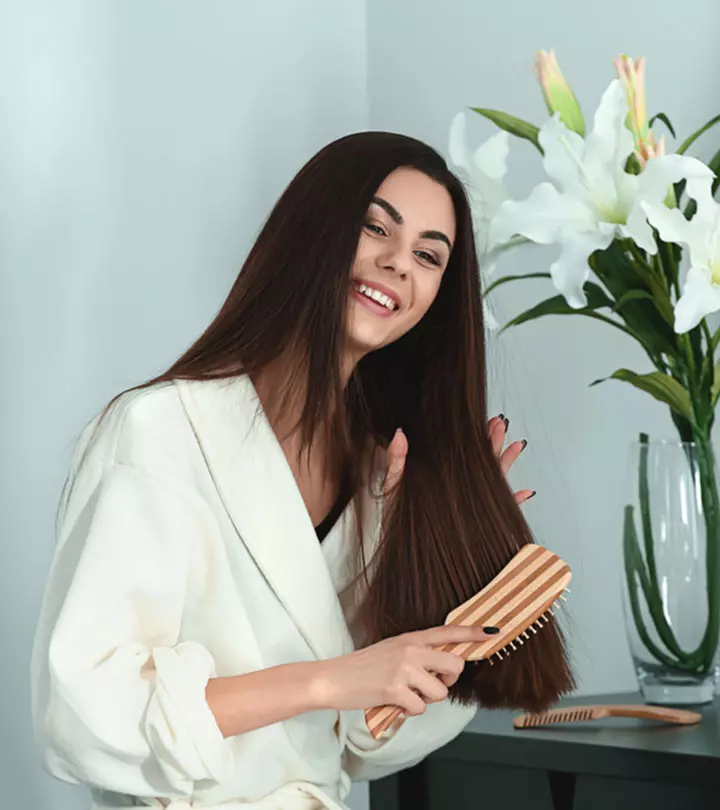
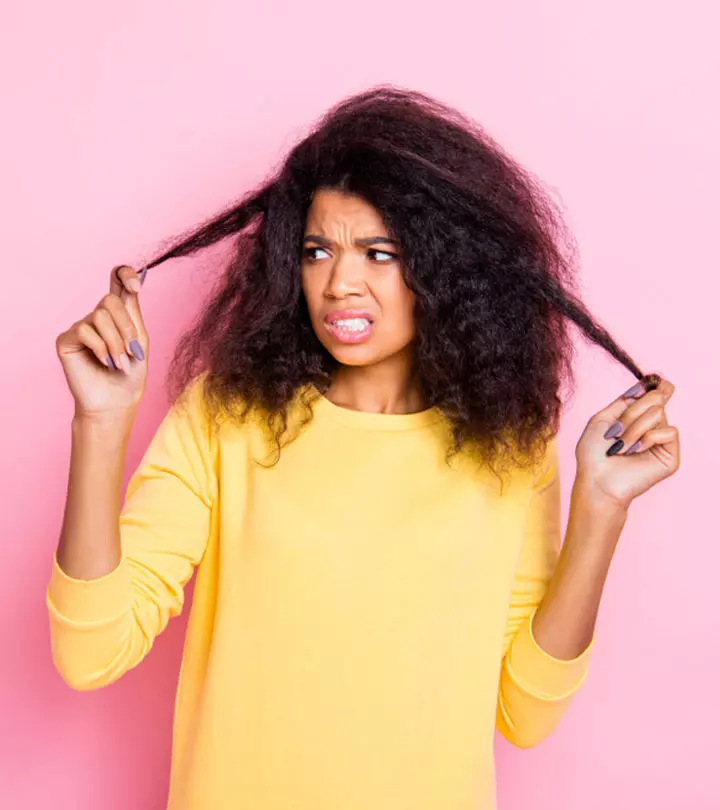

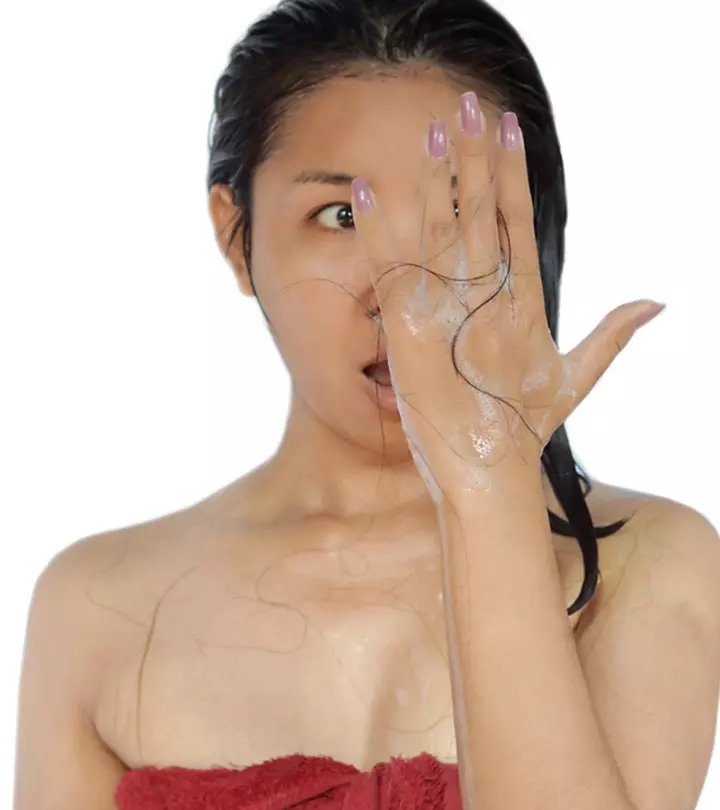





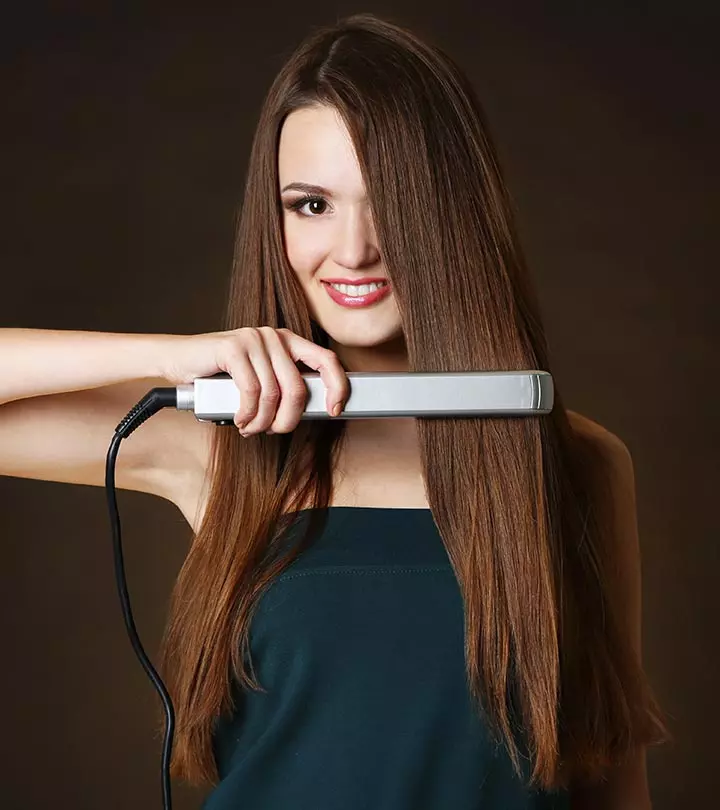
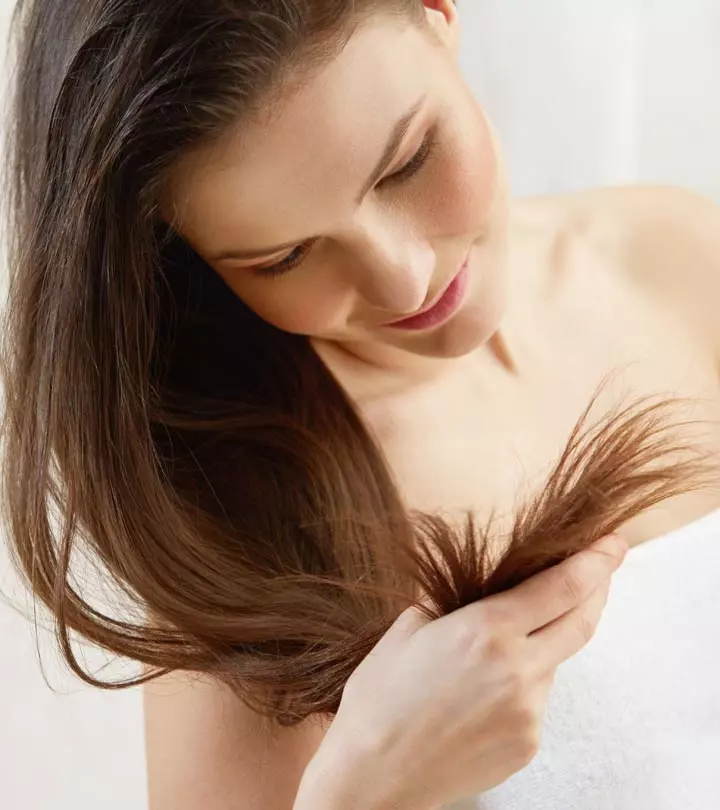


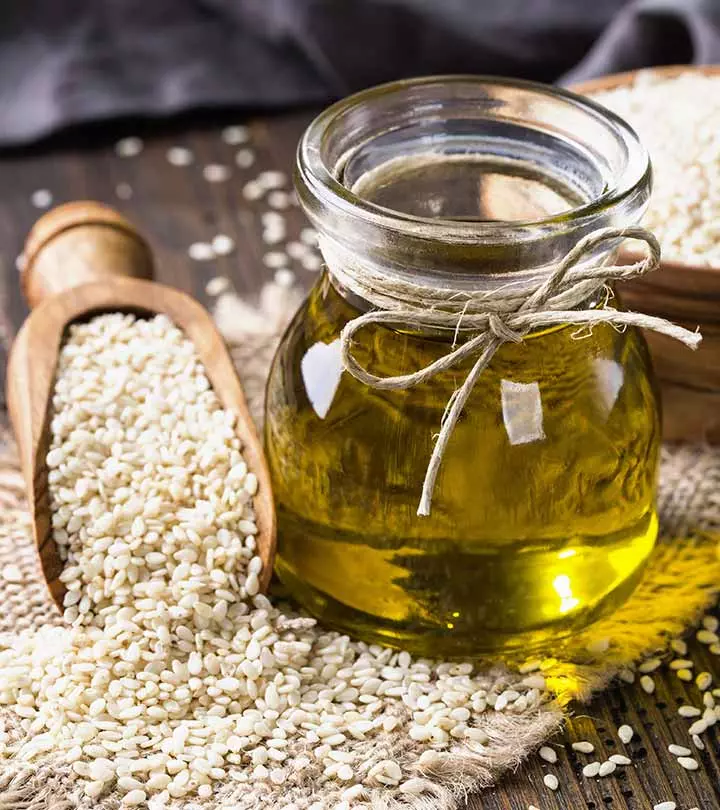


Community Experiences
Join the conversation and become a part of our empowering community! Share your stories, experiences, and insights to connect with other beauty, lifestyle, and health enthusiasts.